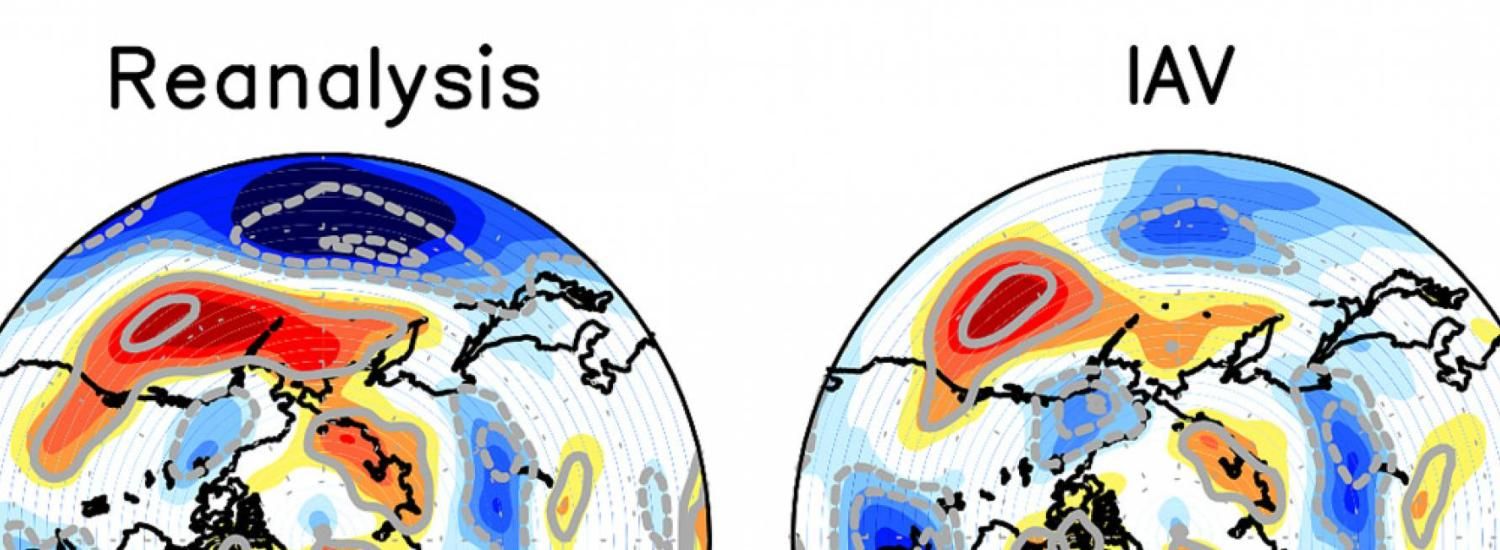Arctic sea ice loss not a major factor in weather extremes in the lower latitudes

There's no doubt that Arctic sea ice is melting. However, new research finds little evidence supporting the idea that Arctic sea ice loss is a major factor behind weather extremes at lower latitudes. Research published in the Journal of Climate finds that sea ice loss accounts for only a small percentage of the warming in the Arctic atmosphere that has been suggested to affect weather at lower latitudes.
"Our results were clear: It's not the Arctic affecting the mid-latitudes, but the mid-latitudes mainly affecting the Arctic…at least during fall and early winter," says Judith Perlwitz, a researcher from the Cooperative Institute for Research in Environmental Sciences (CIRES), who works at NOAA's Earth System Research Laboratories (ESRL) in Boulder, Colorado.
In recent decades, warming global temperatures at the Earth's surface and in the troposphere (the lowest layer of the atmosphere) have been more pronounced in the Arctic, especially during fall and early winter. Because this warming has coincided with disappearing sea ice, some scientists have proposed that sea ice loss is the first link in a chain in which Arctic changes affect extreme weather events at lower latitudes, including the U.S.
According to this theory, melting sea ice warms the whole Arctic troposphere. This in turn weakens the jet stream, which can cause weather patterns to stall in place and prolong rain, drought, and heat or cold spells. Scientists don't all agree on this exact chain of events.
In this new study, Perlwitz and her colleagues at ESRL assessed the links in this chain. They began their analysis by running computer climate model experiments to test the link between sea ice loss and a much warmer troposphere above. Using various observations, such as sea surface temperatures and sea ice extent, to drive climate models, the scientists focused on the differences between two decades: 1979-1988 (before sea ice loss began accelerating) and 2003-2012 (a period of very low sea ice extent). The team focused on fall and early winter, the seasons which have seen the biggest long-term declines in sea ice cover, and studied physical factors which could cause the observed warming in the Arctic troposphere from 1979 to the present.
They found that although sea ice loss is a significant contributor to surface warming in the Arctic atmosphere, it accounts for about 20 percent of increased temperatures in the whole Arctic troposphere. Ocean temperature fluctuations in recent decades and long-term increased sea surface temperatures (SSTs) outside the Arctic are bigger contributors, accounting for 25 percent and 34 percent respectively. Also, internal Arctic atmospheric variability has contributed substantially to Arctic atmosphere warming in recent decades, at a magnitude similar to sea ice loss.
Next, using the same model output, the team examined another link in the proposed causal chain: that warming in the whole Arctic troposphere is driving changes in the jet stream. To do this, they expanded their analysis to the entire Northern Hemisphere to evaluate how various factors contribute to mid-latitude weather patterns of recent decades. What they confirmed, says Perlwitz, is that "mid-latitude weather is not primarily driven by the Arctic and its warming troposphere. Instead, factors independent of the Arctic, operating in middle and tropical latitudes, are mainly responsible."
Specifically, Perlwitz and her colleagues found that Arctic tropospheric warming has only a small effect on mid-latitude weather patterns. Instead, the team found that decades-long variations in sea surface temperatures and atmospheric variability were the key factors explaining the recently observed weakening of the jet stream and changes in mid-latitude weather patterns.
CIRES is a partnership of NOAA and CU Boulder.
Authors of "Arctic Tropospheric Warming: Causes and Linkages to Lower Latitudes" are: Judith Perlwitz (CIRES and NOAA), Martin Hoerling (NOAA), Randall Dole (NOAA)
Graphics: High-resolution images are available for download on CIRES’ Flickr account, News Release album
- See more at: http://cires.colorado.edu/news/press/2014/arcticseaiceloss.html#sthash.P5rtmza8.dpuf